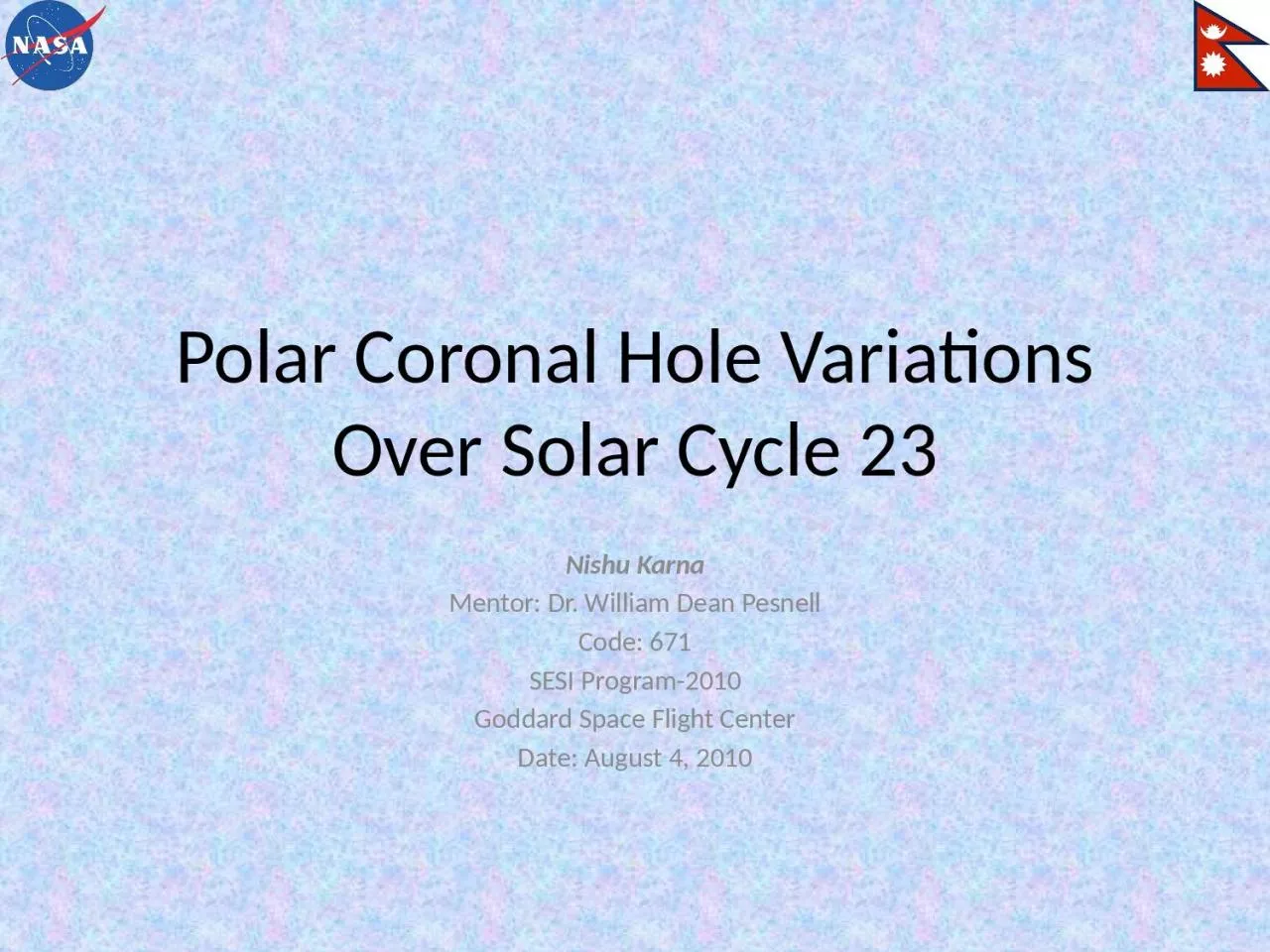

Nishu Karna Mentor Dr William Dean Pesnell Code 671 SESI Program2010 Goddard Space Flight Center Date August 4 2010 Coronal Hole Large dark regions in the Suns corona that are cooler and have lower density plasma than average ID: 915611
Download Presentation The PPT/PDF document "Polar Coronal Hole Variations Over Solar..." is the property of its rightful owner. Permission is granted to download and print the materials on this web site for personal, non-commercial use only, and to display it on your personal computer provided you do not modify the materials and that you retain all copyright notices contained in the materials. By downloading content from our website, you accept the terms of this agreement.
Slide1
Polar Coronal Hole Variations Over Solar Cycle 23
Nishu KarnaMentor: Dr. William Dean PesnellCode: 671SESI Program-2010Goddard Space Flight CenterDate: August 4, 2010
Slide2Coronal Hole :-
Large dark regions in the Sun’s corona that are cooler and have lower density plasma than average. First observed
in
X-ray in
1974. Well seen via UV and X-ray telescopes flown above the Earth's atmosphere. Open magnetic field lines. Source of high speed solar wind. May predict the magnitude of upcoming solar maximum. Polar coverage during low solar activity - Polar Coronal Hole
Slide3Solar and
Heliospheric Observation (SOHO)
International collaboration between ESA and NASA
Launched in December 2, 1995 by Atlas Centaur Rocket
Orbits around the Sun-Earth First Lagrangian Point (L1) Twelve instruments on board Used Extreme UV Imaging Telescope (EIT)
Slide4My Work
Used Elena Benevolenskaya’s
online SOHO/EIT synoptic map archive.
Slide5Find area of Polar Coronal holes from
Carrington Rotation (CR) 1911 to CR 2055 (June 28, 1996 to March 31, 2007).My Work
Slide6(a)
(b)
(a
)
Northern polar coronal hole area and (
b
) Southern polar coronal hole area with respect to Calendar date from June,28 1996 to March 31, 2007 (CR 1911-CR 2055) for the 195 Å,171 Å and 304 Å wavelengths.
(a)
(
b
)
Slide7Solar B Angle:
The latitude position of the center of the solar disk which varies according to change in the tilt of the solar axis relative to the Earth.
Line of Equinoxes
Earth’s orbit
Sun’s Axis
Slide8Variation of the polar coronal hole (Northern, red solid line; Southern, blue solid line) in the 195 Å wavelength.
Slide9Result:
The estimated fractional areas for the Northern hole the area was 5.0% in 1996 and 4.5% in 2007.
For the Southern hole was 4.5% in 1996 and 4.0% in 2007.
Drawback:
The latitude only ranges between ±83°. Missing latitude contributes ~0.75% of the Sun's area at each pole. Distorted image when a 3D sphere is projected into 2D image.
Slide10Future Work:
Work with Magnetograms to better determine coronal hole area.
Slide11